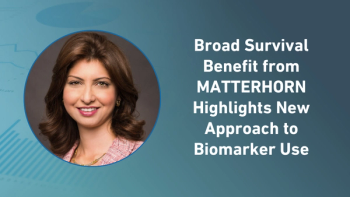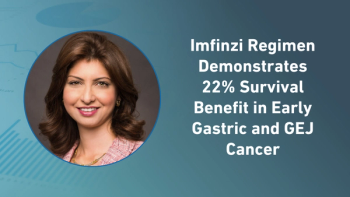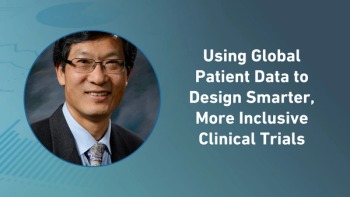
What You Need to Know About Adaptive Platform Trial Design
Allyson Gage, Chief Medical Officer at Cohen Veterans Bioscience talks about her perspectives on platform trial design.
Platform trials are an emerging concept that is gaining in popularity, as it has the capability of saving costs through smart trial design. Moreover, regulatory authorities appear to be increasingly amenable to platform trial designs. In this interview, Allyson Gage, Chief Medical Officer at Cohen Veterans Bioscience (CVB) will discuss her perspectives on platform trial design.
Moe Alsumidaie: What are the benefits of an adaptive platform trial?
Allyson Gage: There are numerous benefits to an adaptive platform trial (APT). In Post-Traumatic Stress Disorder (PTSD), like many psychiatric disorders, we do not understand the underlying biology and cannot strategically select drugs to test based on their targeting a known mechanism of the disease. With APTs, we can learn from the data we are collecting during the study and implement pre-specified changes in the design that reflect these learnings.
For example, you can model various likely trial outcomes and pre-specify the rules or criteria for how you will update your trial design during the study if you see these outcomes at the interim analysis timepoints. This is the adaptive part of an APT. While a traditional randomized clinical trial (RCT) can have an interim analysis, the goal is usually to adjust sample size or stop the study for futility or success and do it only once or twice. With an APT, you can revise significant design features. For example, you can adjust your randomization ratios to hone in on the optimal dose or change your enrollment criteria to enrich for patients that are more likely to respond to the treatment increasing your likelihood of success. And you can do this throughout the study, whether it is after every participant enrolled or after every 100 enrolled.
The platform part of the APT provides other meaningful benefits. Depending on the type of platform trial you are executing, you can test multiple therapeutics at once for efficacy in a single indication or a single therapeutic across multiple indications or multiple patient subtypes. In the first example, rather than testing one therapeutic at a time, you test as many as you have the capacity to enroll. Each therapeutic is tested against the same control, under the same testing condition, by the same people using the same assessment tools, and the same analysis plans, allowing for the implementation of best practices in clinical research with enhanced reliability and reproducibility.
MA: How does this approach address clinical trial inefficiencies?AG: A significant benefit of the platform trial is the ability to share your control group. If you're testing drugs A , B, and C and you need to compare 100 patients on each active drug arm with 100 patients on their control arm, in traditional trials, you would need to enroll 600 patients. In an adaptive platform design, you can enroll 100 patients on your drug A-arm and one-third of that on your drug A control arm because in the end, you are comparing the result of drug A with that of pooled control A, control B, and control C. That is 200 fewer patients to enroll! That is a benefit to patients that do not need to be enrolled and possibly receive a placebo, companies who don’t have the funds to enroll that many patients or keep everything running for that long, and a boon to all as you know whether the drug works that much sooner.
In addition, for smaller biopharma, when joining these more extensive multi-sponsor platform trials, they are joining an infrastructure that is already built. This reduces their financial burden. While it depends upon the governance model, smaller biotech will see significant benefits from the reduced expense and reduced time of this type of study. They are also leveraging the knowledge base of the therapeutic area experts who were recruited to ensure the smart design and operational optimization across analysis plans, site selection and set-up. This format provides an efficient machine for a smaller company that may not be as experienced in conducting clinical trials and may not have the required resources for sustainability. Clinical trials often take longer than planned and smaller companies run out of cash and stop before knowing whether their compound works, which is also tragic for those participants who gave of themselves without any learnings for the field.
MA: Are there any negative aspects or any remarks of caution that you would bring up?AG: Yes, like any clinical trial, there are several areas for caution. Startup for adaptive platform designs takes longer than a traditional trial. The design and analysis plan require a lot more planning and consideration of the actual behavior of your patient population. There is also an extensive amount of operational coordination to enable the availability of high quality and clean data at the frequent interim analyses. Both perspectives require finding the right partners from your CRO to your therapeutic area experts.
MA: Is it actually possible that when a participant goes into this type of trial design, that you can move them from one drug to the other?AG: Yes. For example, if your platform trial has a prespecified “clinical response” threshold and the option for re-randomization, then a participant who does not meet the response threshold could be tested on one of the other available treatment arms.
To make the math really simple, let’s say we have 300 participants with 100 participants each on Drug Appendix A, B, and C. When a participant who was randomly assigned to Drug A or its placebo is assessed for clinical response at the end of their treatment period, if they do not meet that threshold, they can be rerandomized into one of the other drug appendices. This is an excellent opportunity to learn about the biology of the disease because you can profile the characteristics of a participant who does not respond to one drug mechanism but responds to another drug mechanism.
Platform trials can be designed to continue beyond the initial number of drugs at initiation. For example, if you start with three-drug appendices, if one of these drugs at an Interim Analysis meets the threshold criteria for stopping, then you can bring a fourth drug onto the platform to replace it.
MA: Can you incorporate biomarkers in platform trials?
AG: You can incorporate biomarkers in different ways. They could be biomarkers specific to one therapeutic, or they could be more general and be predictors or early markers of response that is independent of the specific therapeutic or perhaps of the therapeutics within a class. In either case, you would want to include it in all appendices to enhance the ability to combine placebo data during analysis. If not, you could lose the efficiency of sharing placebo data. There are no validated biomarkers in PTSD and so in the APT, we are conducting deep phenotyping of the population for the potential discovery of biomarkers for later phases of the platform and pre-specifying a select few candidate biomarkers across all drug appendices. Our hope is that we will confirm or discover a biomarker or combination of biomarkers that can help subtype PTSD, predict the likelihood of response, or be an early marker of response allowing treatment decisions to be made sooner.
MA: In your ongoing trial, are you studying military or general PTSD?AG: We have been awarded a contract from the U.S. Army Medical Research and Development Command (MRDC) to spearhead the design of an APT which aims to identify effective PTSD treatments and PTSD biomarkers. As the Clinical Coordinating Center, CVB will build, manage and oversee all the operations needed to design and conduct the study.In a Team Science approach, CVB’s internal experts are gathering input from scientific, clinical, and drug development experts from industry and academia to refine the design of the APT. In addition, this study design has the benefit of additional input from experts from Department of Defense’s PTSD Integrated Product Team, the Veterans Health Administration (VA), National Institute of Mental Health, National Institute of Alcohol Abuse and Alcoholism, Food and Drug Administration (FDA), and Defense Health Agency’s Psychological Health Center of Excellence.
The information learned in this clinical trial will be used to advance treatments into the next steps required for FDA approval and inform Clinical Practice Guidelines for the treatment of PTSD.
The study will recruit participants with PTSD who are currently or have previously served in the US military. The trauma considered the index trauma does not have to be related to combat; it could be something that occurred off the field, in a different role of service, or even before or after enlisting in the service.
MA: What interventions are you comparing?AG: Based on the current award, we are testing pharmacologic interventions. Further down the road, with the infrastructure in place, it will be possible to bring on other treatment modalities, for example, devices such as rTMS or DCS.
The first drugs to be tested on the platform are being selected partly based on the clinical evidence already available and a determination of the quality of that data.
MA: To what extent is the FDA open to using these trial designs once it comes to new interventions?AG: The FDA is open and interested in seeing more applications for this type of trial. They put out guidelines for industry on using these designs, one in oncology and one more general. The FDA also initiated a program call CID-Complex Innovative Designs, that provides the opportunity for more frequent contact and guidance to two Sponsors each quarter who meet their adaptive design requirements. I think there's been a hesitancy in psychiatry where you don't have many biomarkers, to employ this type of design because the ultimate efficiency comes from matching up disease mechanisms with treatment mechanisms of action. However, we feel that APT is an important opportunity for CNS to learn more about disease mechanisms and quickly implement those learnings to get closer to precision medicine.
Moe Alsumidaie, MBA, MSF, is a thought leader and expert in the application of business analytics toward clinical trials, and Editorial Advisory Board member for and regular contributor to Applied Clinical Trials.
Newsletter
Stay current in clinical research with Applied Clinical Trials, providing expert insights, regulatory updates, and practical strategies for successful clinical trial design and execution.






.png)



.png)



.png)
.png)
